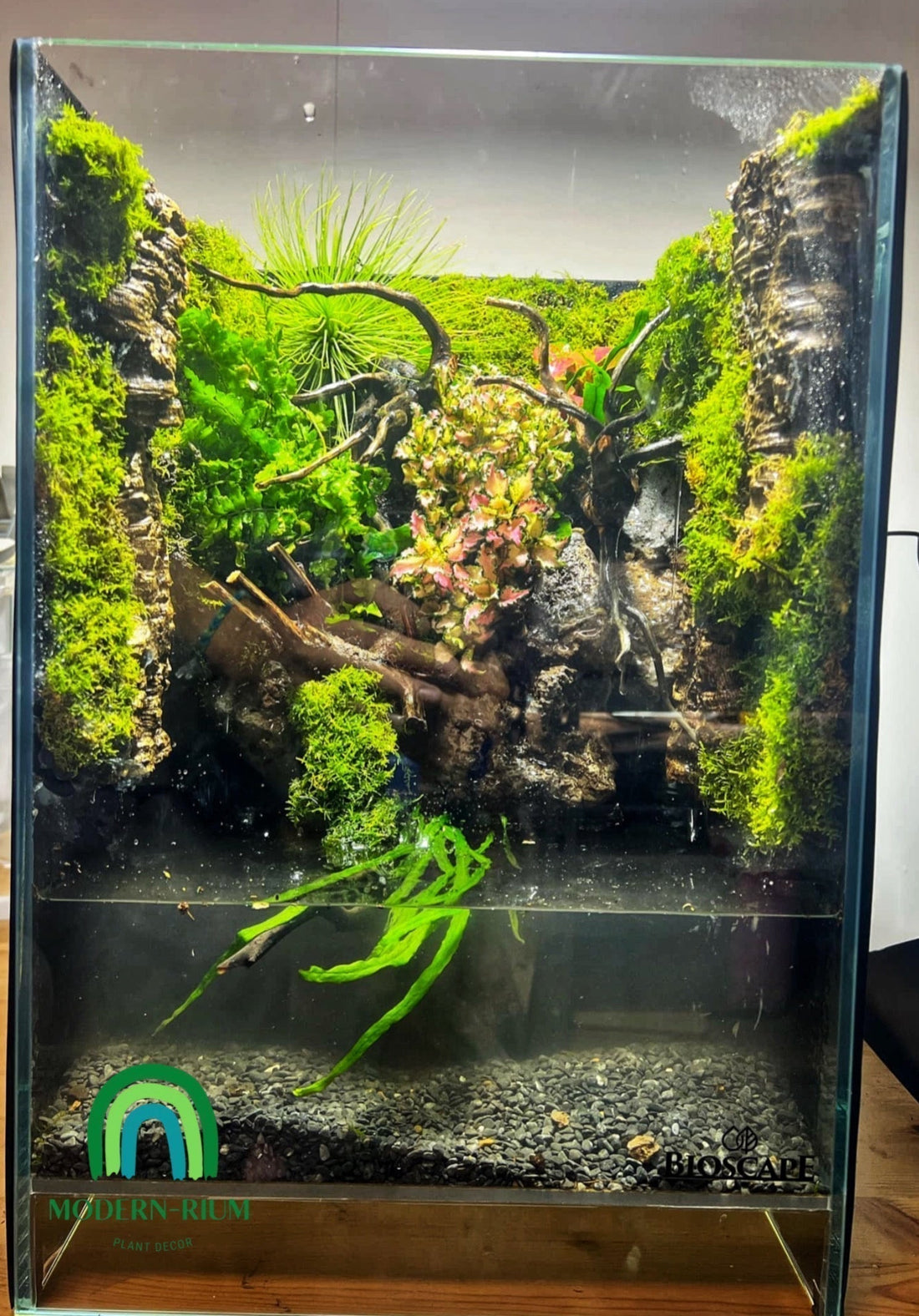
🐛 Adding Springtails, Isopods, and Microfauna to Your Paludarium
Danny PhamShare
Welcome back to the Modernrium blog! Today we’re diving into the hidden heroes of healthy paludariums: springtails, isopods, and other microfauna. While plants and hardscape often steal the spotlight, these tiny critters are the key to building a self-sustaining, bioactive ecosystem.
🌱 What Is Microfauna—and Why Do You Need Them?
In the wild, every environment has decomposers—organisms that break down waste, recycle nutrients, and keep the ecosystem balanced. In your paludarium, microfauna serve the same purpose.
They:
- Break down decaying plant matter and leftover food
- Prevent mold and fungal outbreaks
- Aerate the substrate
- Reduce smells and buildup
- Create a more natural, self-regulating ecosystem
By adding microfauna, you’re not just building a paludarium—you’re building a bioactive environment.
🐜 Meet the Team: Who’s Who in the Cleanup Crew
1. Springtails (Collembola)
- Size: ~1–2 mm (tiny white or gray “jumping bugs”)
- Habitat: Moist substrate and leaf litter
- Diet: Mold, decaying matter, and fungi
- Fun Fact: They’re almost invisible but incredibly efficient at preventing mold outbreaks, especially in high-humidity environments.
2. Isopods (Woodlice or Roly-Polies)
- Popular Types: Dairy cow, dwarf white, powder orange, and rubber ducky
- Size: 3–15 mm depending on species
- Diet: Rotting leaves, dead plant matter, and waste
- Bonus: Larger isopods are visible and add interest as “functional pets.” They also help churn the soil and improve drainage.
3. Other Microfauna (Optional)
- Enchytraeids (white worms) – Help aerate deeper substrate layers.
- Nematodes (microscopic worms) – Help balance bacteria populations (best left to advanced setups).
🧪 How to Add Microfauna to Your Paludarium
Step 1: Prepare the Environment
Ensure your paludarium has a moist substrate layer (e.g. ABG mix or moss + coco fiber)
Add a leaf litter layer or moss covering for shelter and food
Avoid chemical fertilizers or pesticides—they harm microfauna
Step 2: Introduce Them Carefully
Gently pour or spoon them into the substrate or onto moss
Distribute them across the base and around plants
Keep conditions humid and stable (microfauna thrive in high humidity)
Step 3: Maintain the Balance
Add decaying leaves or organic matter occasionally as food
Monitor mold—if there’s none, they’re doing their job
Avoid overfeeding if you have animals like frogs or shrimp
💧 Ideal for Paludariums
Paludariums offer the perfect environment for microfauna:
Moisture? ✅
Organic matter? ✅
Covered substrate and hiding spots? ✅
Microfauna especially benefit closed or semi-closed paludariums where humidity is high and airflow is controlled.
🌟 Final Thoughts
Springtails, isopods, and microfauna may be tiny, but they play a huge role in the long-term health of your paludarium. Think of them as your miniature janitorial staff—working 24/7 to keep your ecosystem clean, balanced, and beautiful.
Whether you're new to paludariums or upgrading your setup to a bioactive build, don’t overlook these incredible helpers. Your plants—and any tank inhabitants—will thank you.
 is here! Shop now, pay later in 4 easy installments
is here! Shop now, pay later in 4 easy installments










